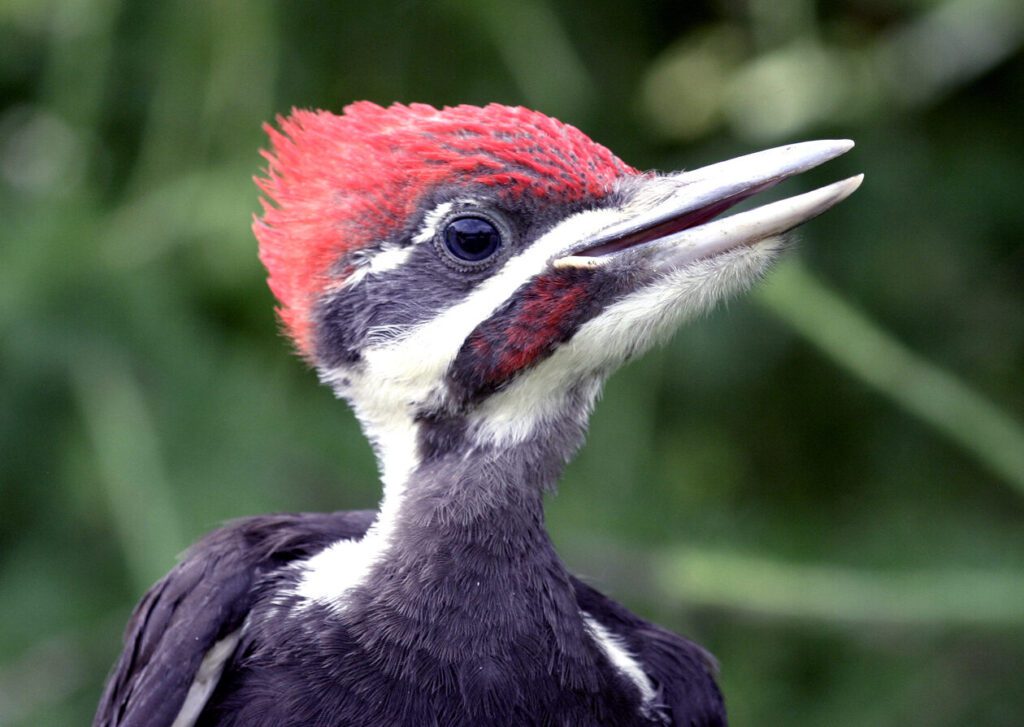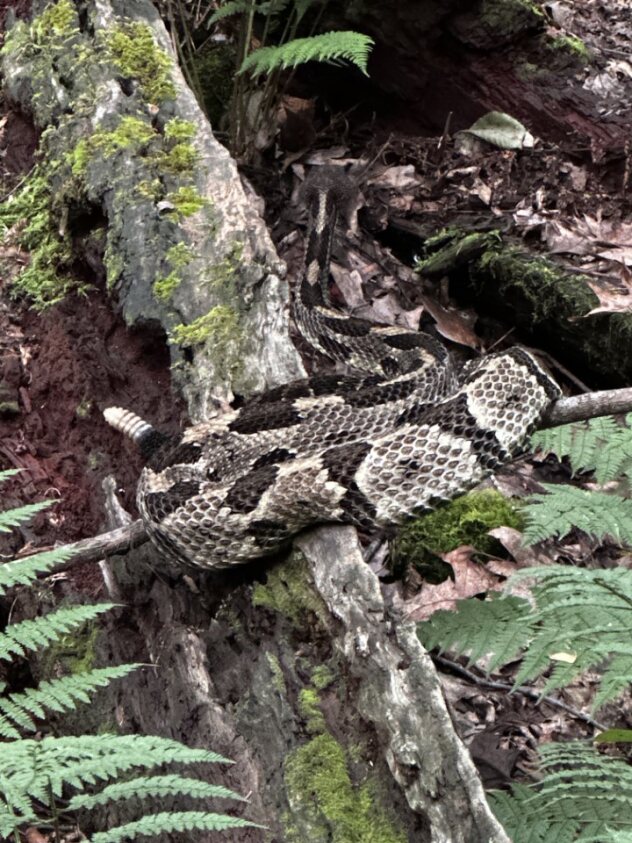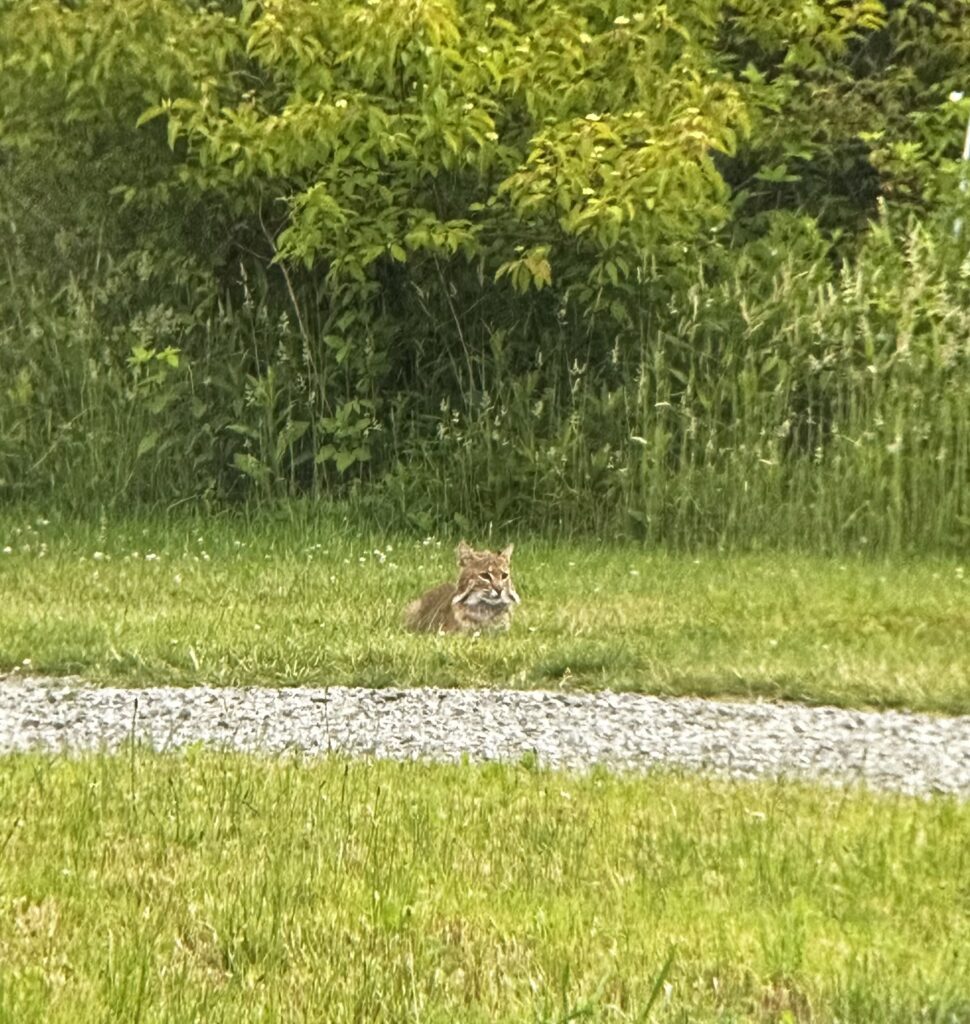by Grace Muench
Since 2013, field technicians at Powdermill Avian Research Center have gathered data about breeding birds on the 2200-acre Powdermill Nature Reserve through point counts. This wildlife survey term denotes tallies of every bird detected by sight and sound by a single observer located at fixed, predetermined positions for specified time periods, along with rough estimates of each bird’s distance from the surveyor. On many days this summer I was the surveyor, and the experience was enriching.
Powdermill is divided into ten sectors containing eight to eleven points, and during June and early July, I visited a different sector each day to conduct ten-minute point counts. I surveyed each sector twice, for a total of 190 different counts. Point counts can tell us about densities of birds in the immediate area, trends in the regional populations, species proclivity for a certain habitat, and more. Because Powdermill’s point count locations overlay plots from a vegetation survey that was completed at Powdermill in the mid-2000s, the paired data give us valuable information about the forest ecology on the reserve.

On the first day of point counts, the Porcupine Ridge trail acted as the main access corridor for many of the points in the sector. While walking along the trail to the last point of the day, I heard an unfamiliar noise. It sounded like several incessant hollow bark-like calls, and in the far distance I could hear Pileated Woodpeckers. Knowing that these woodpeckers primarily nest in dead trees, I began to search for nestlings. At the very top of an old, dead chestnut oak tree with almost no bark, I saw three heads poke out of a cavity, calling to the parents who were now close by and began acting defensively. While I had heard Pileated Woodpeckers in almost every sector this summer, this was the only nest that I observed, and it was the first of many incredible sightings.
Shortly after completing surveys at every point in all ten sectors, I restarted from the beginning. The particular sector I surveyed on June 11 has about a one-mile-long hike uphill to get to the first point. Three quarters of a mile in, I saw some movement to my right and redirected my attention. A yearling black bear was running up and down a fallen tree, stopping only briefly to scratch himself. I could tell the bear was a yearling by the shape of the head, along with the long and slender legs making the bear look tall. The bear ran across the fallen tree two or three times before he noticed my presence. He very slowly turned himself to look in my direction, paused for a few seconds at most, and took off into the forest.
Pennsylvania is also home to the Timber Rattlesnake, which brings me to my next animal encounter. I was walking through a mountainous, hilly second growth forest. The understory was filled with green briar and stinging nettles, so I had my eyes on the ground to minimize the chances of being stuck or stung by these plants. The walk from one point to the next was about 250 meters, or 0.16 miles. There are often obstacles like fallen trees, some of which are easy to step over, but others I had to go around. As I approached a fallen tree, I heard an unfamiliar noise. Though unfamiliar, the rattling sound was unmistakable. A few meters down the fallen tree was a large, perfectly coiled dark phase Timber Rattlesnake. I estimated this snake was four to five feet long, and it was clear that there was a meal moving through the snake’s digestive tract. The snake had eight rattles, specialized hollow scales which are added, one layer at a time, each time the reptile sheds its skin. I was lucky to be able to observe the snake from a safe distance for a few minutes before I headed to the next point.

The last day of point counts was also one to remember. About halfway through the final point of the sector, something about 250 meters away made a noise that I can only describe as a woman screaming. Immediately, all birds stopped singing and flew up into the canopy. I knew this animal call. It was a bobcat! This scream is referred to as “caterwauling,” and the sound is produced primarily during the mating season. After hiking back down to the avian research center, I was lucky enough to spot a different bobcat! A relatively small bobcat was hiding next to a structure near the bird banding lab, stalking the eastern cottontails that were foraging in the grasses. After a few minutes of inching closer and closer to the rabbits, the bobcat pounced. The rabbits frantically ran in all different directions, and the bobcat was left empty-handed.

After completing the 190 point counts, I rejoined the banding crew to finish the breeding season and to prepare for fall migration. I will always remember encountering and observing incredible wildlife, seeing my lifer Cerulean Warbler, and all that the Powdermill staff has taught me this summer. I can’t wait to learn more this fall!
Grace Muench is a Field Tech at Powdermill Avian Research Center.
Related Content
A Summer Internship at Powdermill
